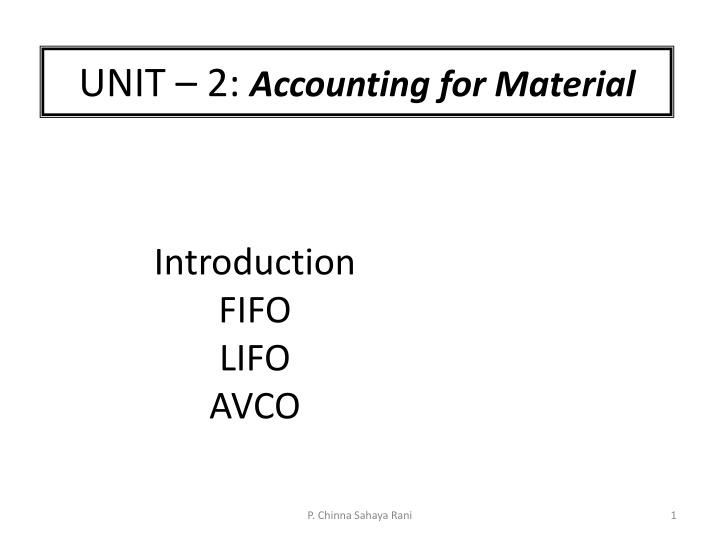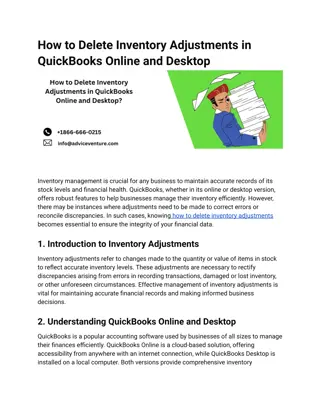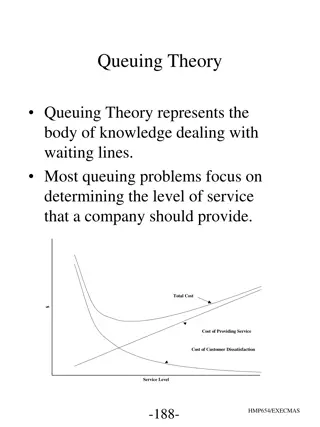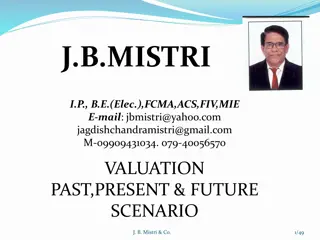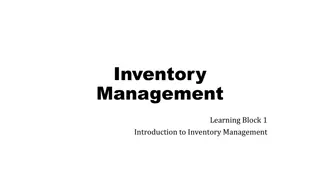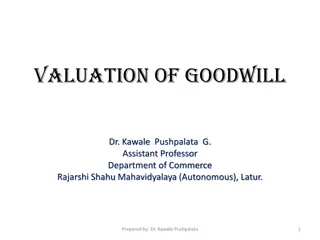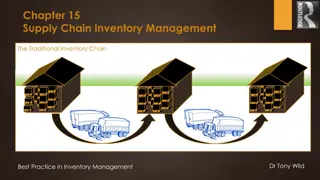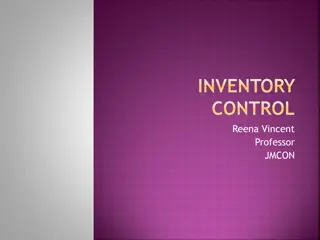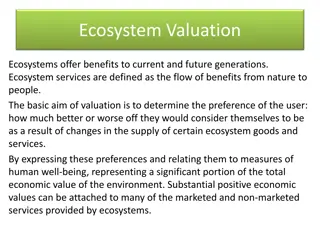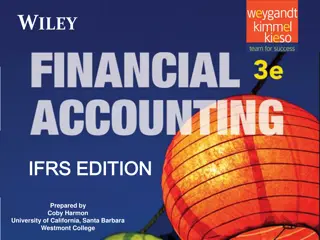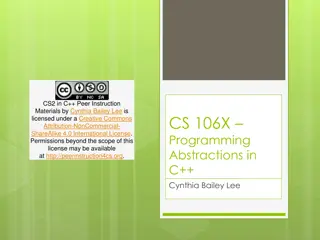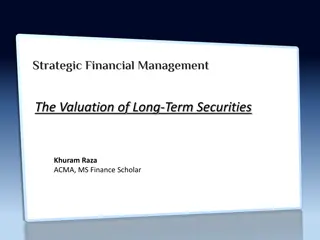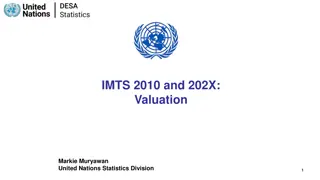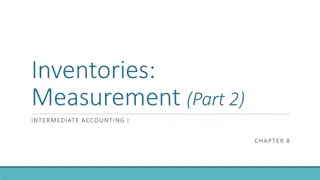Inventory Valuation Methods: FIFO, LIFO, AVCO
Inventory valuation is crucial for businesses to determine the cost of inventory on hand. Learn about FIFO, LIFO, and AVCO methods with examples and understand how they impact financial reporting and decision-making. Explore the differences between these methods and their implications on inventory cost allocation.
Download Presentation

Please find below an Image/Link to download the presentation.
The content on the website is provided AS IS for your information and personal use only. It may not be sold, licensed, or shared on other websites without obtaining consent from the author.If you encounter any issues during the download, it is possible that the publisher has removed the file from their server.
You are allowed to download the files provided on this website for personal or commercial use, subject to the condition that they are used lawfully. All files are the property of their respective owners.
The content on the website is provided AS IS for your information and personal use only. It may not be sold, licensed, or shared on other websites without obtaining consent from the author.
E N D
Presentation Transcript
UNIT 2: Accounting for Material Introduction FIFO LIFO AVCO P. Chinna Sahaya Rani 1
Introduction As inventory is usually purchased at different rates (or manufactured at different costs) over an accounting period, there is a need to determine what cost needs to be assigned to inventory. For instance, if a company inventory three times in a year at SAR 50, SAR 60 and SAR 70, what cost must be attributed to inventory at the year end? purchased 2 P. Chinna Sahaya Rani
Inventory (stock) valuation A good estimate of closing stock is provided by three methods of stock valuation: First-In-First-Out (FIFO) Method Last-In-First-Out (LIFO) Method Average Cost (AVCO) Method 3 P. Chinna Sahaya Rani
First-In-First-Out (FIFO) Method In this method we assume that the first set of inventory received is the first to leave the warehouse. The resulting ending inventory will be valued at current prices. 4 P. Chinna Sahaya Rani
First-In-First-Out (FIFO) Method Example Bike LTD purchased 10 bikes during January and sold 6 bikes, details of which are as follows: January 1 : Purchased 5 bikes @ $50 each January 5: Sold 2 bikes January 10 : Sold 1 bike January 15 : Purchased 5 bikes @ 70 each January 25 : Sold 3 bikes P. Chinna Sahaya Rani 5
With reference to FIFO method, complete the following table Date Purchase Issues Inventory Units $/Units $ Total Units $/Units $ Total Units $/Units $ Total Jan 1 Jan 5 Jan 10 Jan 15 Jan 15 Jan 25 1 70 70 4 70 280 6 P. Chinna Sahaya Rani
Last-In-First-Out (LIFO) Method In this method we assume that the last set of inventory received is the first to leave the warehouse. The resulting ending inventory will be valued at older prices. 7 P. Chinna Sahaya Rani
Example (LIFO) Same example Date Purchase Issues Inventory Units $/Units $ Total Units $/Units $ Total Units $/Units $ Total Jan 1 Jan 5 Jan 10 Jan 15 Jan 15 Jan 25 2 70 140 4 240 8 P. Chinna Sahaya Rani
Average Cost (AVCO) Method In this method, each time goods are purchased we calculate a new average cost of inventory. The average cost is calculated using the equation Average cost of inventory= Total value of goods on hand Quantity of goods on hand The resulting ending inventory will be valued at the last calculated average. 9 P. Chinna Sahaya Rani
Example: (same example) Date Purchase Issues Inventory Units $/Units $ Total Units $/Units $ Total Units $/Units $ Total Jan 1 Jan 5 Jan 10 Jan 15 Average Cost of Inventory Jan 25 3 64.286 192.858 4 64.286 257.144 10 P. Chinna Sahaya Rani
Exercise 1: Cindy Sheppard runs a candy shop. She enters into the following transactions during July: - July 1 Purchases 1,200 lollypops at $1 each - July 13 Purchases 500 lollypops at $1.20 each. - July 14 Sells 700 lollypops at $2 each. Calculate the value of inventory in the end of the month 11 P. Chinna Sahaya Rani
Exercise 2: 1 Mar opening balance 880 @ $9 2 Mar purchase 300 @ $6 4 Mar sell 400 6 Mar sell 600 10 Mar purchase 400 @ $8 15 Mar purchase 500 @ $5 22 Mar sell 900 27 Mar purchase 200 @ $2 28 Mar sell 100 30 Mar purchase 900 @ $3 31 Mar sell 700 What is the closing balance if this business uses the FIFO , LIFO, ACCO method? 12 P. Chinna Sahaya Rani
